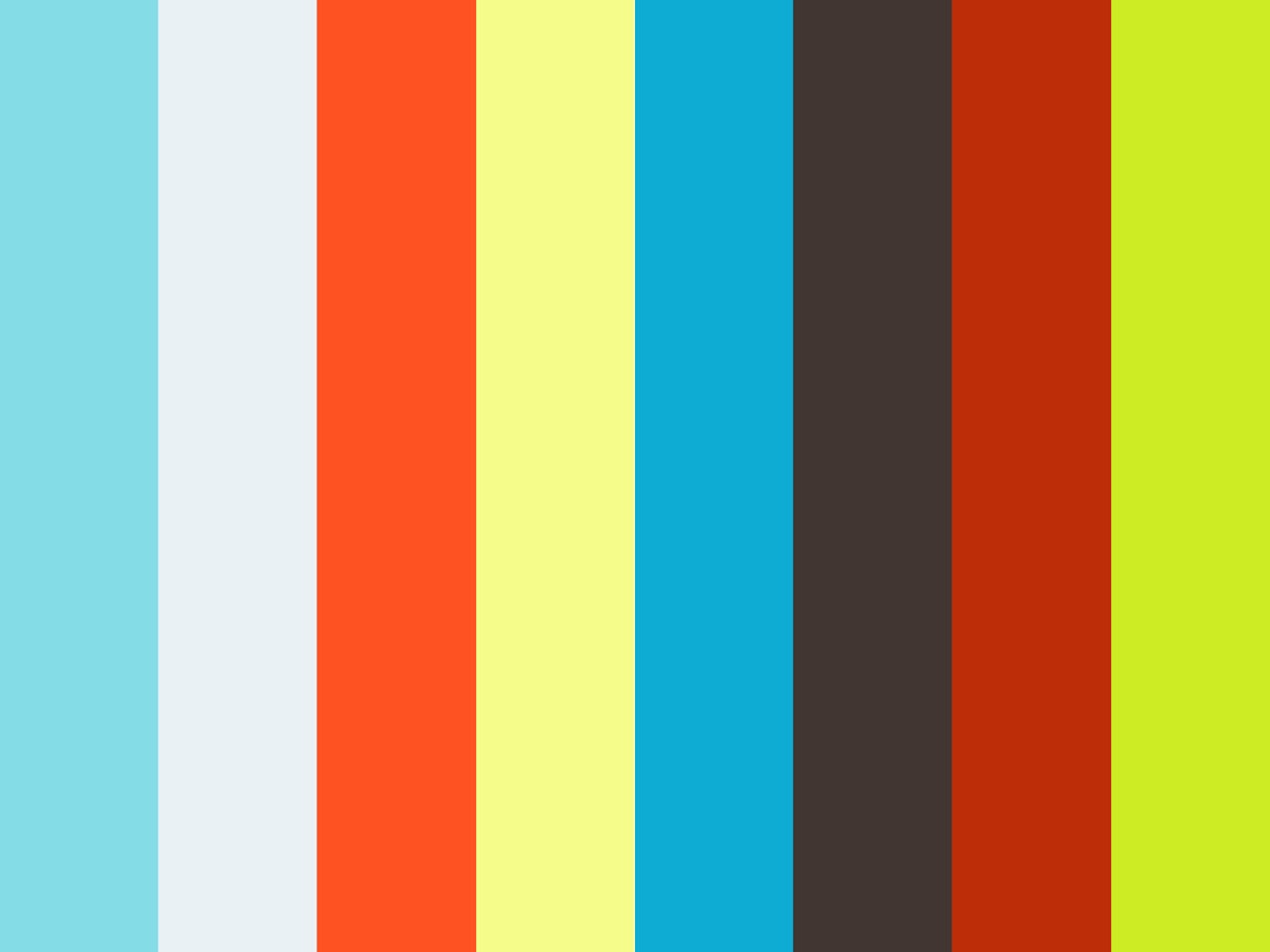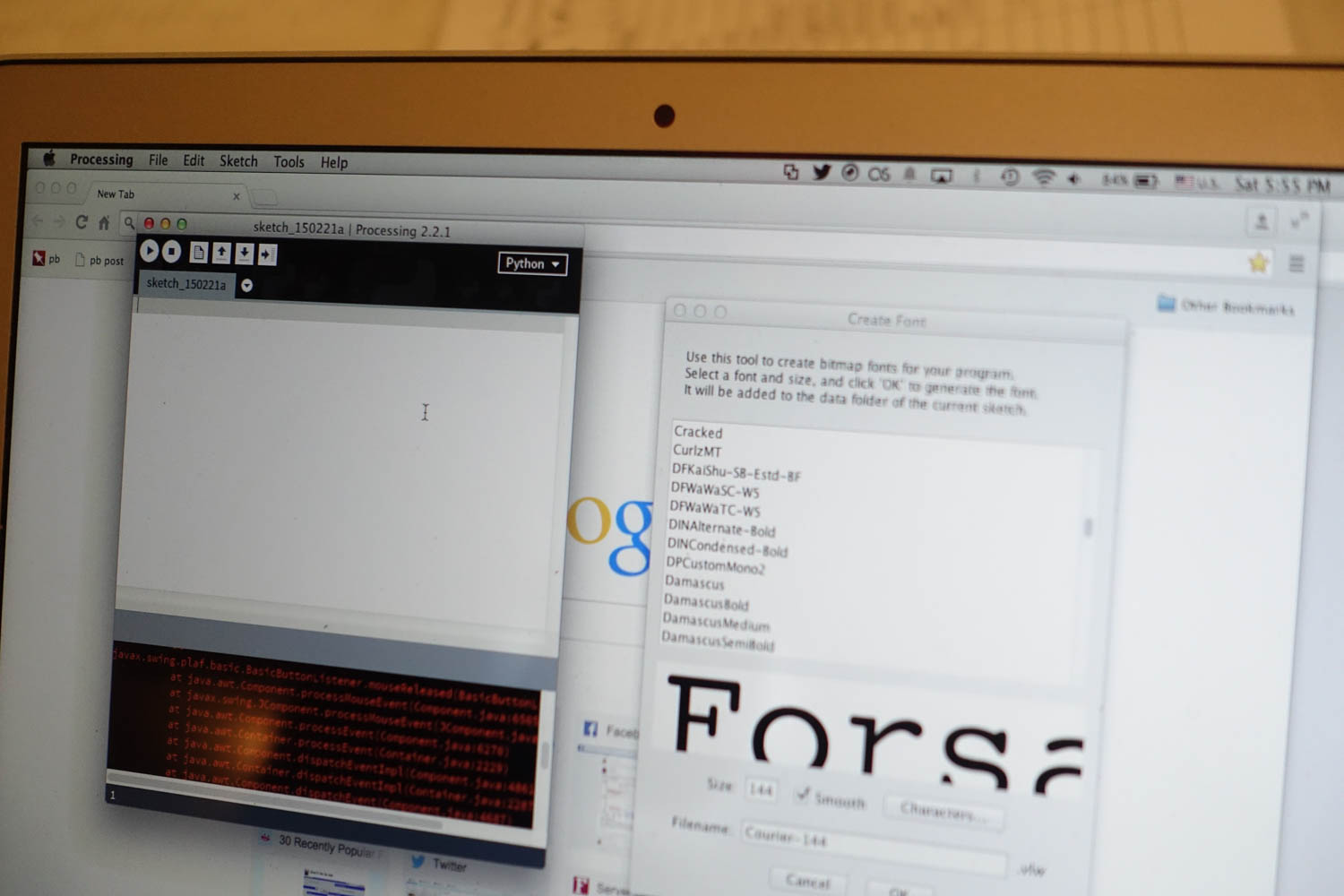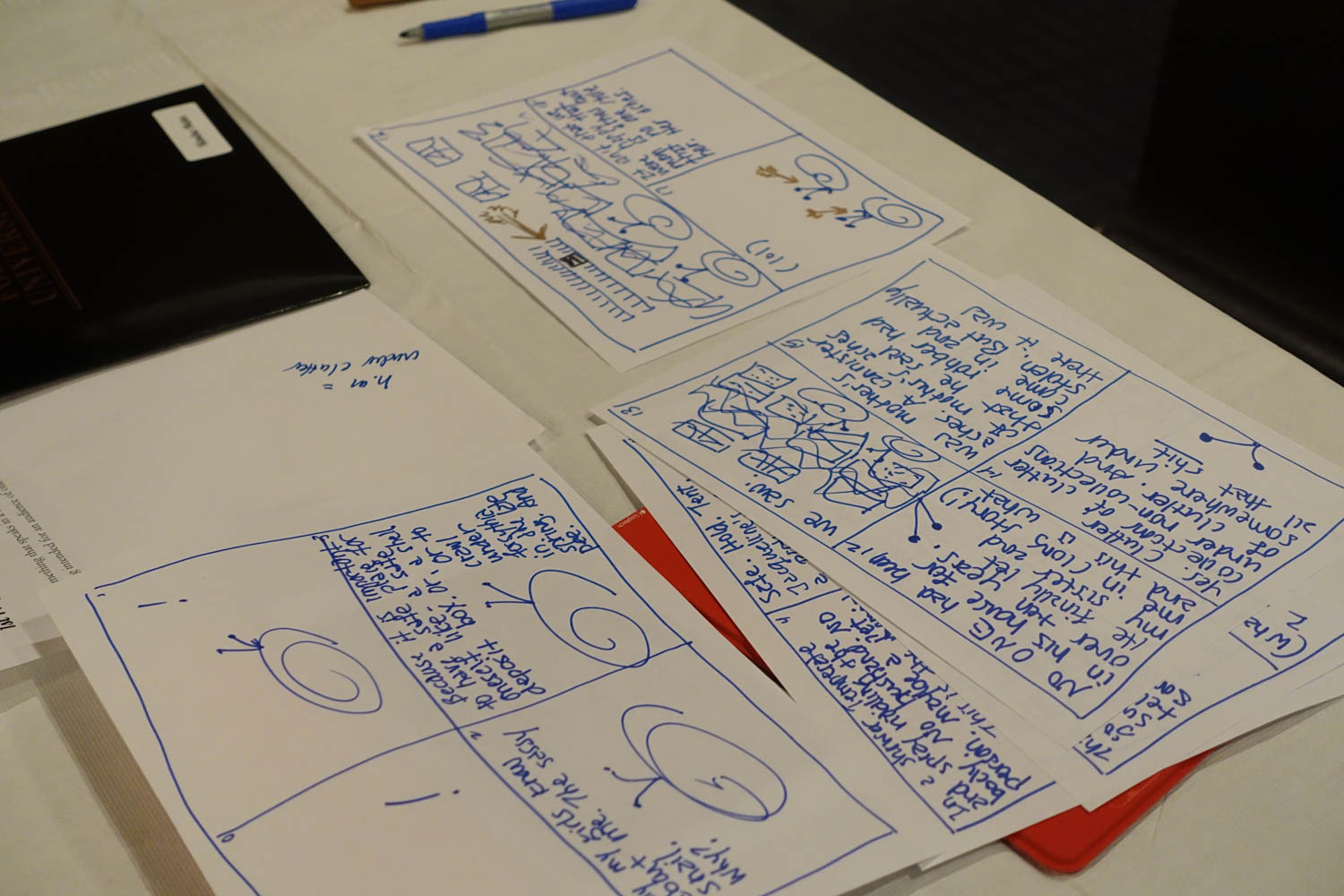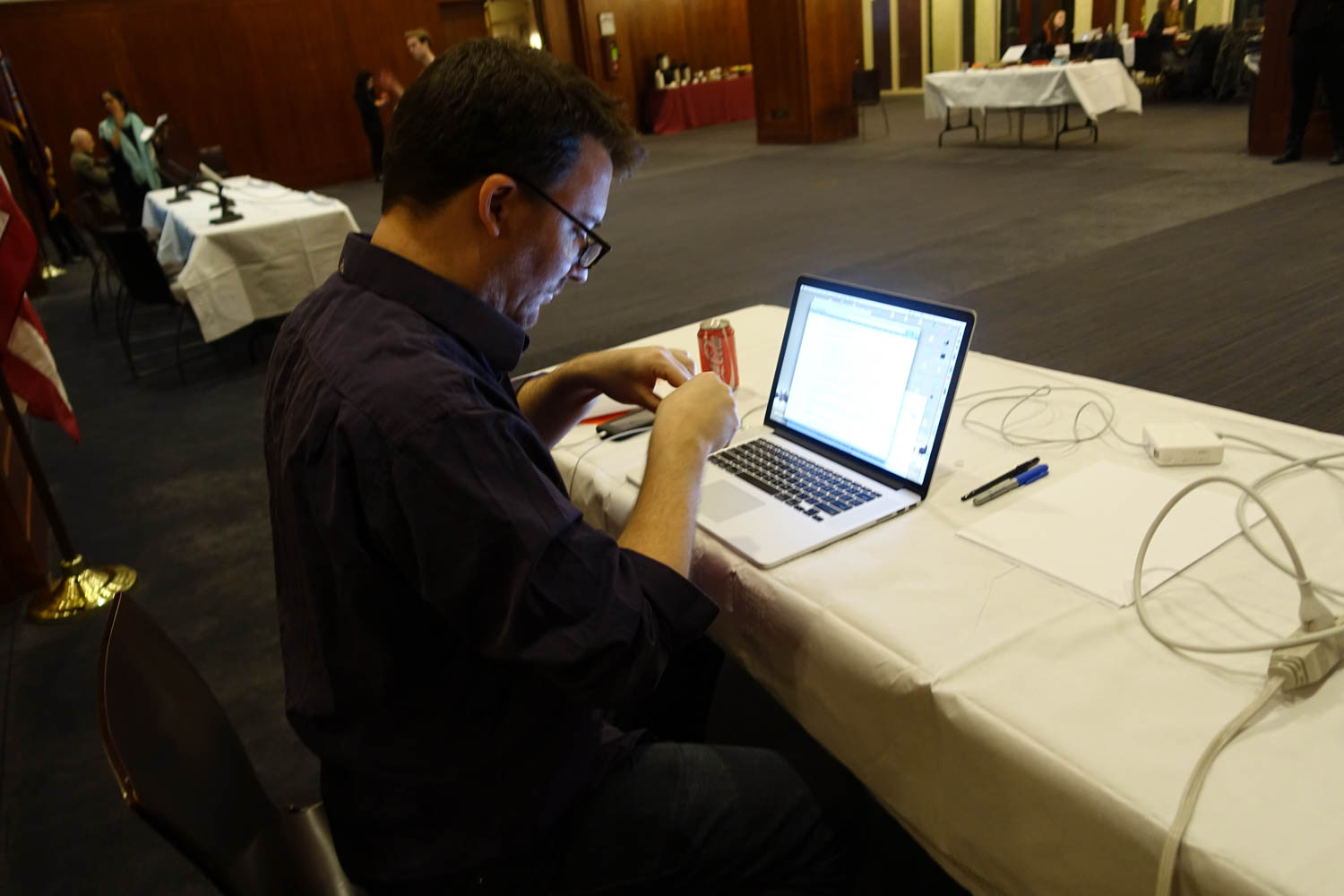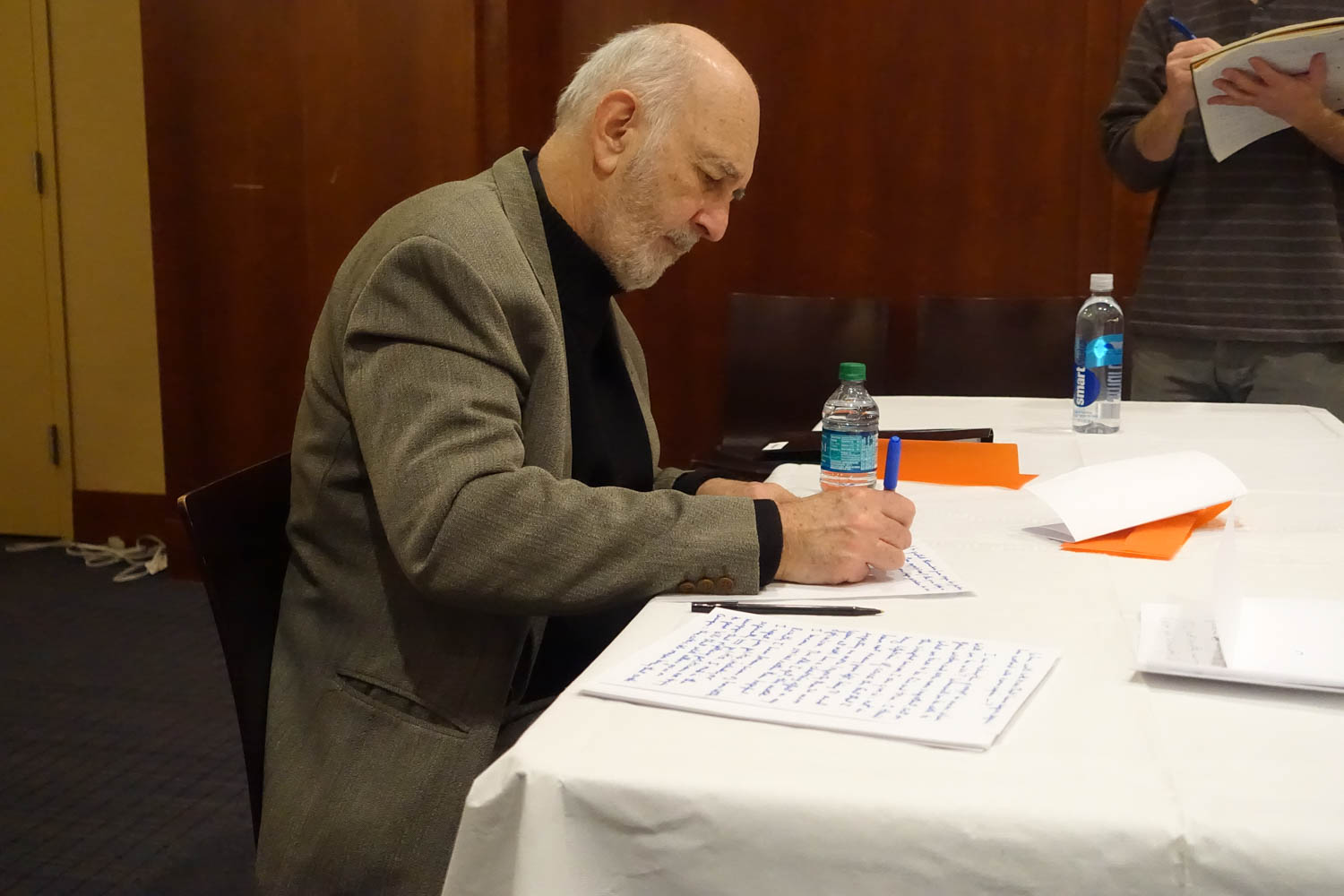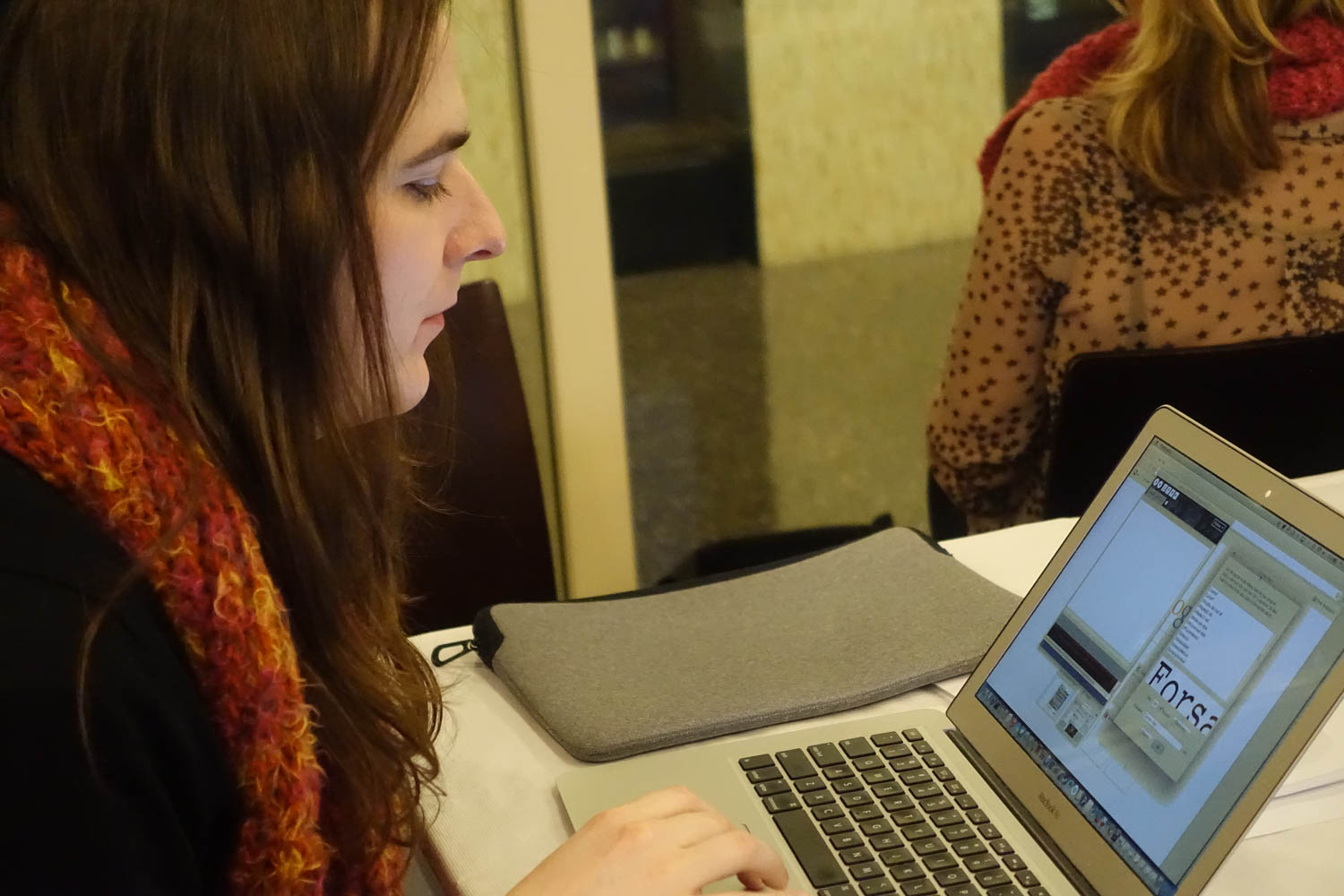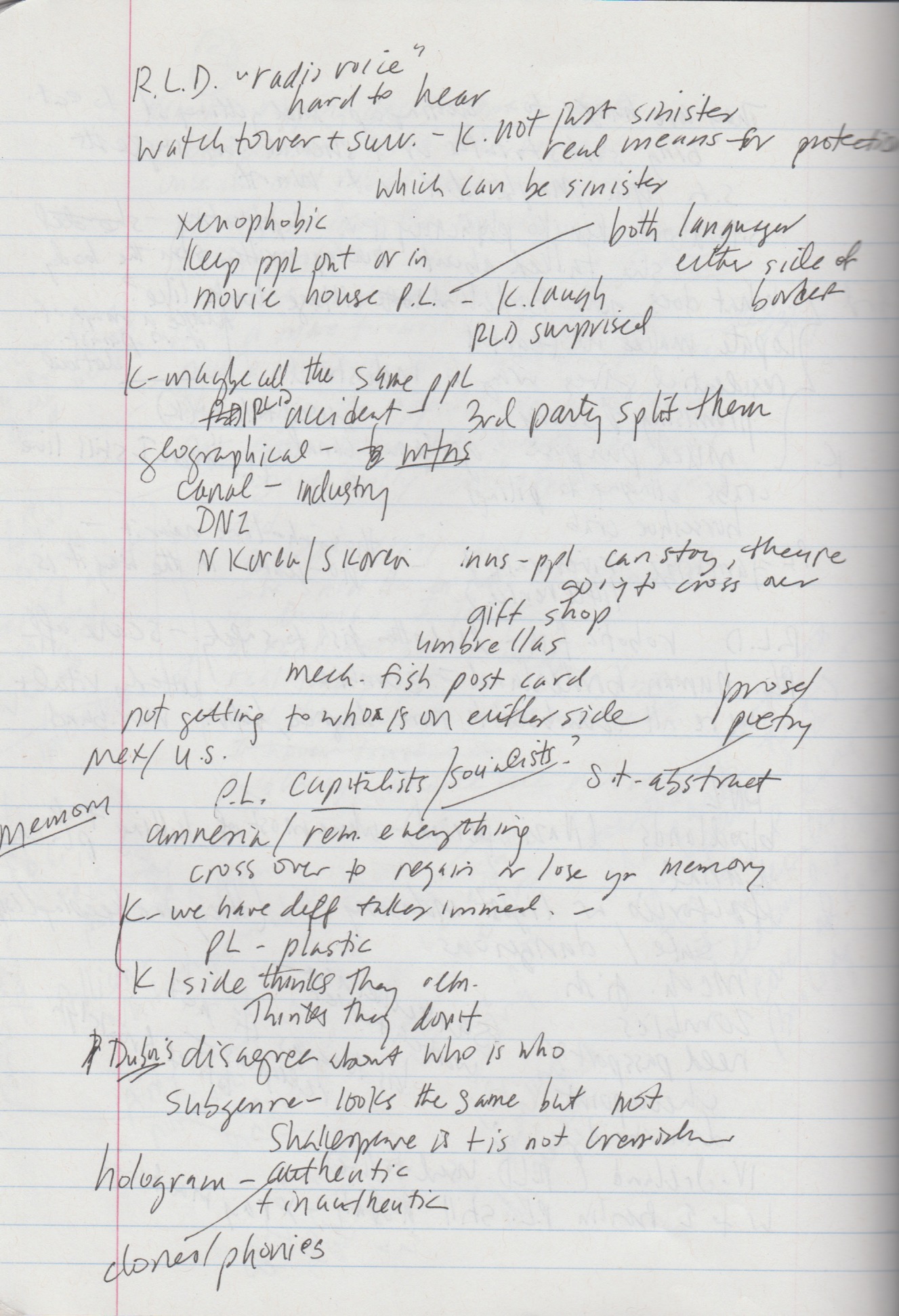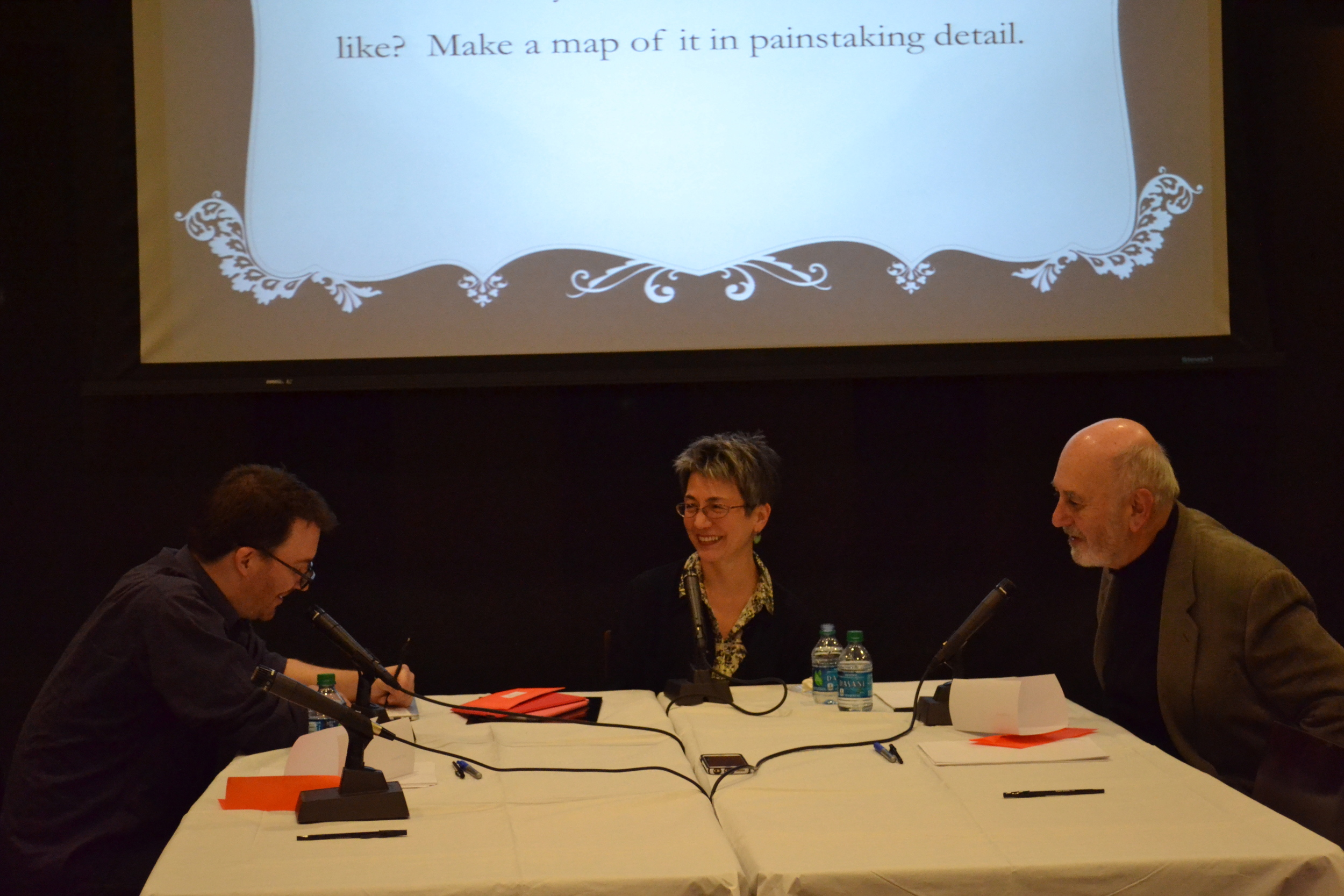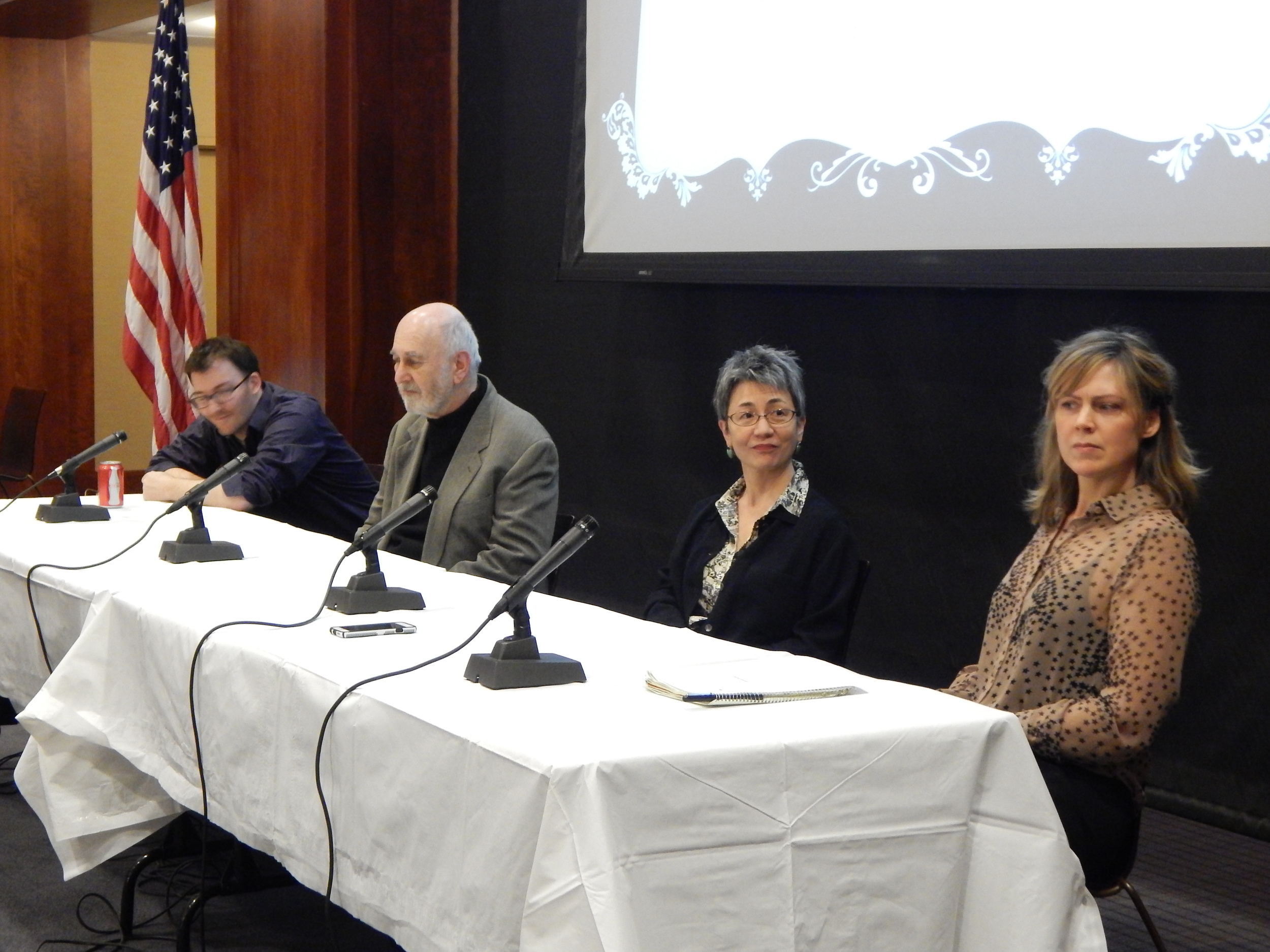Museum In Media Res is a laboratory experience designed to showcase and celebrate artistic process and collaboration. We’re interested in art as a vital, unfolding conversation and in-the-moment epiphany. While we publish and love painstakingly crafted literature and art, Museum In Media Res will assemble some of the finest literary and artistic minds to improvise and play.
Museum artists are given three creative proposals that speak to CURA’s theme of “Borderlands” (which evokes The Doe Fund’s transformative mission). Artists will have a half hour to respond to each proposal in any way they wish. The final prompt will have all artists collaborating together (though collaboration may take place at any point). Our editorial staff will document our living museum and will conduct short interviews with the artists. The artifacts and documentation of Museum In Media Res will be showcased in CURA’s Spring 2015 magazine.
Proposals
Make something that speaks in a universal language, or make something intended for an audience of one.
When will we know that homo sapien sapien has evolved into homo sapien _______?
What does your Borderland village look like? Make a map of it in painstaking detail.
Exhibitions
2015 Museum Artists
Amy Benson’s book, The Sparkling-Eyed Boy (Houghton Mifflin 2004), was the 2003 Katherine Bakeless Nason Prize winner in creative nonfiction, sponsored by Bread Loaf Writer’s Conference. Recent work has appeared in journals such as Agni, Black Warrior Review, BOMB, Boston Review, Denver Quarterly, Gettysburg Review, New England Review, PANK, and Triquarterly. She has been a fellow at Bread Loaf and a resident at Ledig House International and is the co-founder of the First Person Plural Reading Series in Harlem.
R. Luke DuBois is a composer, artist, and performer who explores the temporal, verbal, and visual structures of cultural and personal ephemera. He holds a doctorate in music composition from Columbia University, and has lectured and taught worldwide on interactive sound and video performance. Exhibitions of his work include: the Insitut Valencià d’Art Modern, Spain; 2008 Democratic National Convention, Denver; Weisman Art Museum, Minneapolis; San Jose Museum of Art; National Constitution Center, Philadelphia; Cleveland Museum of Contemporary Art, Daelim Contemporary Art Museum, Seoul; 2007 Sundance Film Festival; the Sydney Film Festival; the Smithsonian American Art Museum; PROSPECT.2 New Orleans; and the Aspen Institute. His work and writing has appeared in print and online in the New York Times, National Geographic, and Esquire Magazine.
Kimiko Hahn, the author of nine collections of poetry, finds her material from varied sources. Both Brain Fever (W.W. Norton, 2014) and Toxic Flora (2010) were triggered by varied fields of science; The Narrow Road to the Interior (2006) is a collection of Japanese forms. She also investigates the Asian American female body, black lung disease, premature burial. Her honors include fellowships from the Guggenheim Foundation, The National Endowment for the Arts, The New York Foundation for the Arts, Lila Wallace-Reader’s Digest Writers’ Award; also, the the Shelley Memorial Prize, The PEN/Voelcker Award, Asian American Writers Workshop Literary Award. Improvisational work includes photography with Lauren Henkin and the film Everywhere At Once (Peter Lindbergh, Holly Fisher, and narrated by Jeanne Moreau). Hahn is a distinguished professor in the MFA Program in Creative Writing & Literary Translation at Queens College, CUNY.
Phillip Lopate has written three personal essay collections — Bachelorhood (Little, Brown, 1981), Against Joie de Vivre (Poseidon-Simon & Schuster, 1989), and Portrait of My Body (Doubleday-Anchor, 1996); two novels, Confessions of Summer (Doubleday, 1979) and The Rug Merchant (Viking, 1987) and a pair of novellas (Two Marriages, Other Press, 2008); three poetry collections, The Eyes Don’t Always Want to Stay Open (Sun Press, 1972), The Daily Round (Sun Press, 1976) and At the End of the Day (Marsh Hawk Press, 2010). He has been awarded a John Simon Guggenheim Fellowship, a New York Public Library Center for Scholars and Writers Fellowship, two National Endowment for the Arts grants, and two New York Foundation for the Arts grants. He is the director of the nonfiction graduate program at Columbia University, where he also teaches writing.
Allison Parrish is a computer programmer, experimental writer, educator and game designer who lives in Brooklyn. A graduate of New York University's Interactive Telecommunications Program, her teaching and practice center around digital poetics, procedural design, and Internet culture.


